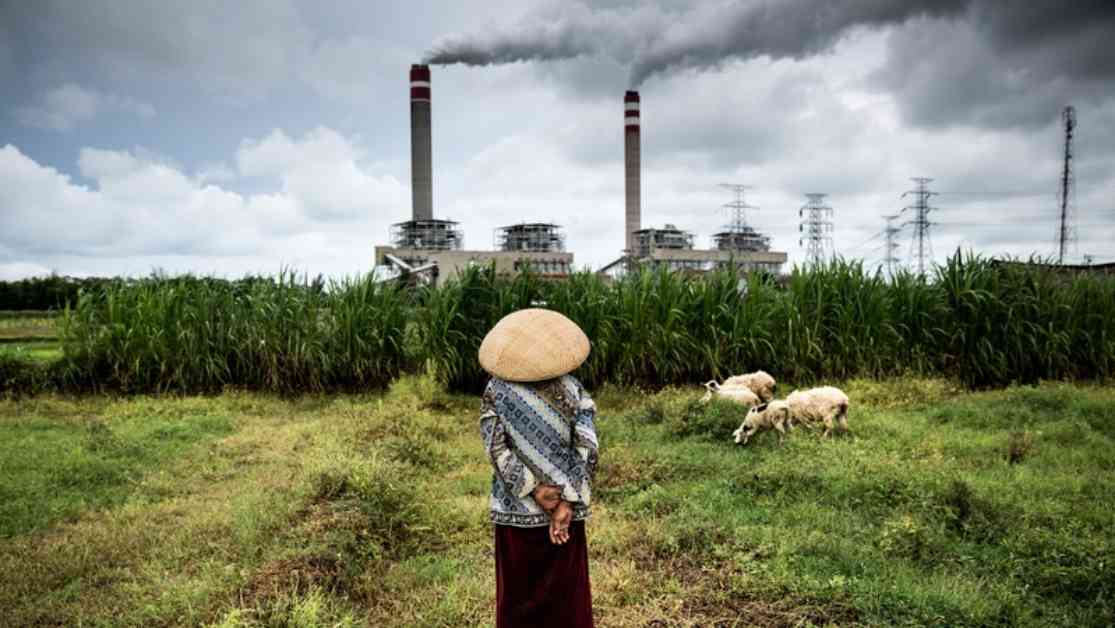Indonesia’s President Prabowo Subianto has set a groundbreaking target of eliminating coal from the country’s energy mix by 2040, a significant challenge for a nation heavily reliant on coal for 62% of its electricity production. As the first 100 days of the president’s tenure unfold, a pressing need emerges for a concrete strategy to achieve this ambitious goal.
Dr. Dinita Setyawati, Ember’s senior electricity policy analyst for Southeast Asia, underscores the importance of establishing clear and achievable targets, along with a greater emphasis on renewable energy sources to meet the escalating demand for power in Indonesia. The country’s recently unveiled National Electricity Master Plan (RUKN) 2024-2060 outlines strategies for phasing out coal, including proposals for co-firing with biomass fuel and incorporating carbon capture and storage technology into existing coal infrastructure. However, these strategies appear to conflict with Indonesia’s decarbonization objectives and may not align with the accelerated adoption of renewable energy necessary to meet the demand surge by 2040.
### Coal Transition Challenges and Solutions
To facilitate the transition away from coal, there is a crucial need for a systemic overhaul in the power sector. President Prabowo’s bold announcement must pave the way for a comprehensive plan to retire coal-fired power plants with significant emissions footprints, including captive coal plants that operate off-grid. Addressing captive coal is essential to prevent a substantial portion of Indonesia’s coal emissions from evading regulation, thereby jeopardizing the nation’s climate ambitions.
Moreover, reevaluating the contractual obligations between PLN, Indonesia’s state electricity company, and power producers is essential to enable a swift reduction in coal-powered operations. Current agreements often bind PLN to fixed purchases of coal-generated electricity, hindering the integration of renewable energy sources. Flexibility is key to reducing reliance on coal, particularly by enhancing the downward flexibility of coal-fired power plants. This capability enables quick adjustments to energy demand, allowing renewable sources to take precedence on the grid and curbing carbon emissions effectively.
### Accelerating Renewable Energy Deployment
An essential aspect of achieving the 2040 coal phase-out target while meeting electricity demand involves increasing the share of renewable energy to 65%. This scenario envisions solar energy accounting for 20%, wind for 11%, and other renewables like nuclear, geothermal, bioenergy, and hydro contributing 34%. To stabilize solar energy output, the calculation includes 68GWh of battery capacity for stationary applications, based on factors like efficiency, solar plant capacity utilization, and storage hours.
Early retirement of coal power plants necessitates dedicated financial support, prompting the Indonesian government to collaborate with various stakeholders to develop viable funding mechanisms. Climate finance, carbon markets, and public-private partnerships are potential avenues to mobilize resources and expedite the coal phase-out process while supporting renewable energy projects and fostering economic diversification in coal-dependent regions.
### The Role of Storage Systems and Policy Incentives
Integrating battery storage solutions into solar projects is crucial for addressing solar power intermittency and ensuring a reliable renewable energy supply. However, existing policies like Presidential Regulation 112 may not sufficiently incentivize battery storage integration due to capped charges. To promote clean energy adoption, Indonesia must consider enhancing policy frameworks to encourage the widespread deployment of storage systems in conjunction with renewable energy sources.
The electrification trends in the transportation sector underscore the urgency of a comprehensive decarbonization strategy to reduce coal dependence. Empowering private entities in the electricity market can unlock substantial financing for Indonesia’s clean energy transition. Following the lead of neighboring countries like Viet Nam, Malaysia, and Thailand in enabling direct renewable energy procurement by companies can accelerate Indonesia’s shift towards clean electricity sources.
Expanding renewable energy deployment not only offers environmental benefits but also presents significant economic opportunities for Indonesia. The sector’s growth can spur job creation, attract green investments, and provide access to sustainable power sources, fostering long-term economic growth, environmental stability, and energy security. By taking decisive action now, Indonesia can pave the way for a greener and more sustainable energy future.














